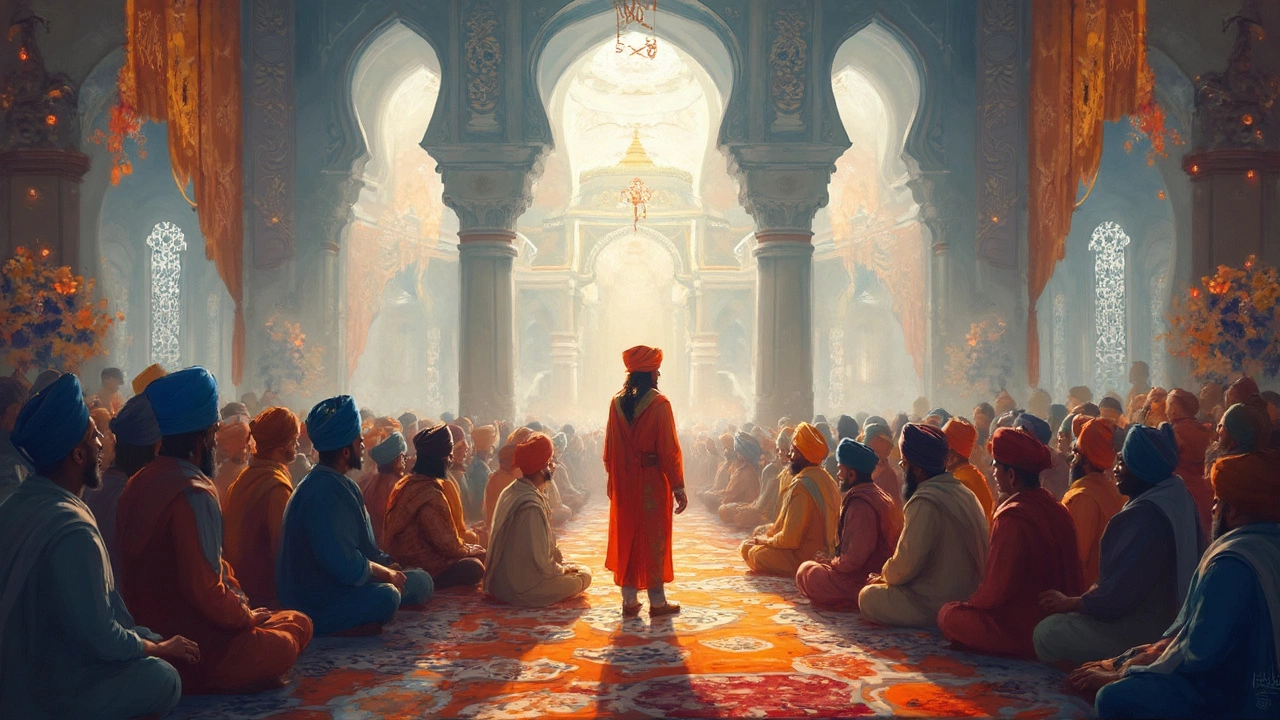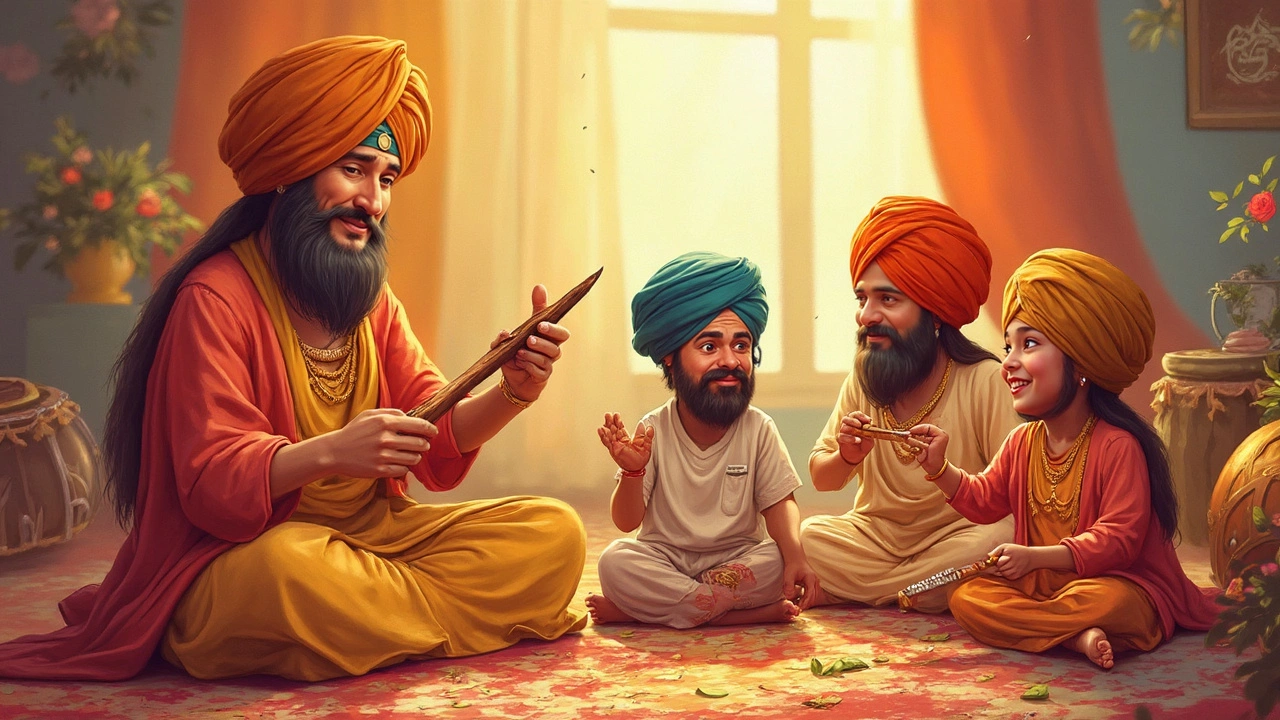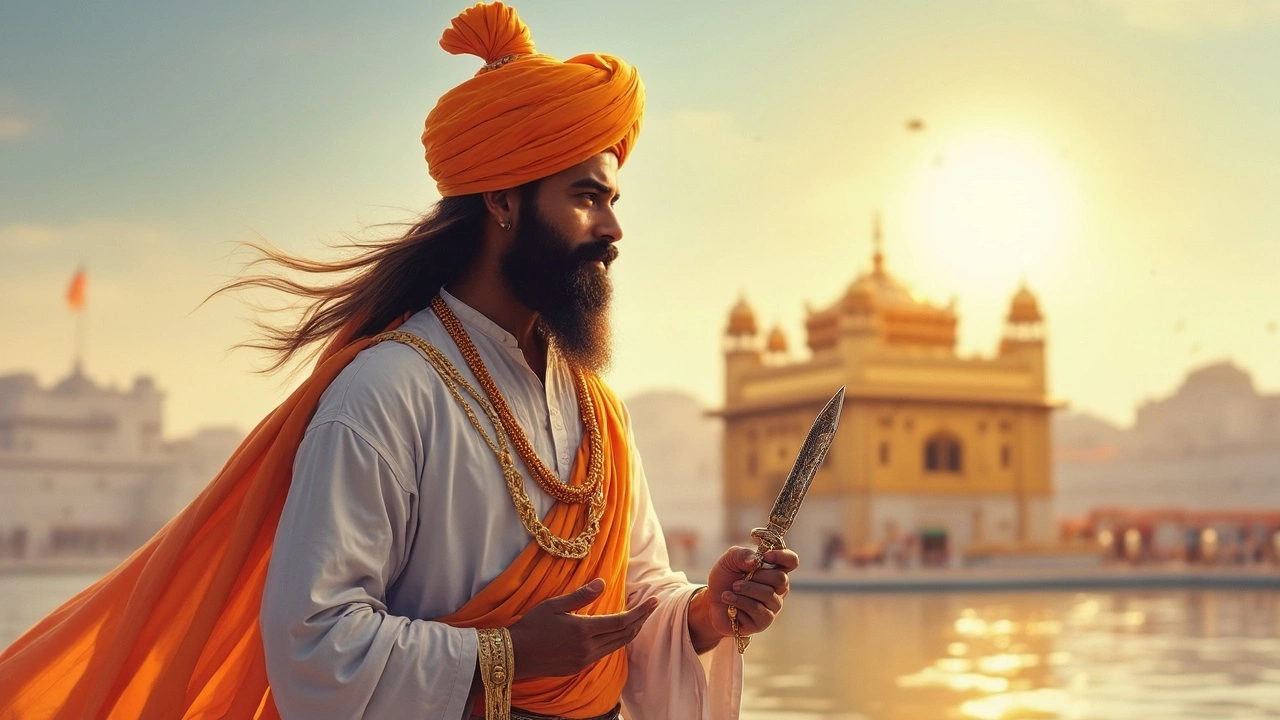Have you ever wondered about the unique symbols that Sikhs carry with them? The Five Ks are fascinating elements that every initiated Sikh adheres to. Each of these symbols isn't just an item; it's a way of expressing faith and identity. Let's start off with a brief exploration of these symbols to get a sense of their importance.
First up is the Kesh, which represents the uncut hair that signifies acceptance of God's will. It's a symbol of living in harmony with the way nature intended us to be.
Then there's the Kara, the steel bracelet that every Sikh wears. It's not just a piece of jewelry; it's a constant reminder to do good and stay connected with the community.
- Introduction to the Five Ks
- The Significance of Kesh
- Understanding Kara
- Unveiling the Kirpan
- The Role of Kangha
Introduction to the Five Ks
For Sikhs, the Five Ks aren't just symbols; they are woven into the everyday fabric of life. These symbols are a gift from the Tenth Guru, Guru Gobind Singh, who instituted them in 1699. Each of these items starts with the letter 'K', which gives them their collective name: the Five Ks. They serve as a constant reminder of the Sikh identity and the guiding principles of the faith.
Understanding Their Origin
Back in 1699, during the formation of the Khalsa Panth by Guru Gobind Singh, these symbols were made obligatory for initiated Sikhs. This was a revolutionary step, not just as a religious requirement but as a way of uniting the community.
Today, the Five Ks continue to be relevant, representing core Sikh values such as honesty, equality, fidelity, meditation on God, and respect for others.
The Five Symbols
- Kesh - Uncut hair, signifying acceptance of God's will.
- Kangha - A wooden comb, symbolizing cleanliness and order.
- Kara - A steel bracelet, representing restraint and gentility.
- Kirpan - A ceremonial sword, highlighting bravery and defense of truth.
- Kachera - Cotton undergarments, a sign of modesty and self-control.
These symbols hold deep spiritual meaning and act as a source of motivation for better living. Each Sikh is reminded daily of their duties and responsibilities, not just to God but to society as well.
Whether it's the Kara that jingles with every movement or the feel of the Kesh in the wind, these symbols have a way of constantly grounding the wearer in their beliefs.
The Significance of Kesh
Kesh, which means uncut hair, is an integral part of Sikh identity. It's one of the Five Ks that all baptized Sikhs are expected to maintain. But why is it so important, you ask? Well, Kesh symbolizes the acceptance of God's will. By keeping their hair uncut, Sikhs honor the natural state of the body as it's given by the Creator.
The practice of maintaining uncut hair dates back to the birth of Sikhism in the 15th century. Guru Nanak, the founder of Sikhism, encouraged his followers to keep their hair unshorn as a sign of devotion. Over the years, this practice became a defining layer of the Sikh faith.
Spiritual Significance
For Sikhs, keeping their hair uncut isn't just about tradition. It has a spiritual essence that resonates deeply in their faith. Hair is considered a gift from God, and they believe that tampering with it would mean meddling with the divine creation.
Practical Aspects
Contrary to what some might think, maintaining uncut hair requires dedication and care. Many Sikhs wear a turban, which helps keep long hair tidy and ceremonial. The turban itself is a symbol of self-respect, dedication, courage, and spirituality.
Here are some practical tips Sikhs follow to maintain their Kesh:
- Regular washing and proper care to keep the hair clean and healthy.
- Combing the hair twice a day with a Kangha, another symbolic item that complements Kesh by keeping it neat.
- Tying the hair in a bun and covering it with a turban or a cloth, commonly known as a Patka, especially during daily activities.
Maintaining Kesh isn't just about physical appearance; it's about embodying the virtues taught by the Sikh Gurus and walking the path of righteousness. Though it may seem like a mere lifestyle choice to an outsider, for a Sikh, it is a profound commitment to live truthfully and humbly.
Kesh in Modern Times
In today's world, where people are busy embracing trends and styles, sticking to one’s religious tenets might seem like a challenge. However, the younger generation of Sikhs is increasingly embracing Kesh and everything it stands for. They see it as a badge of identity, spirituality, and faith amidst rapidly changing societal norms.

Understanding Kara
The Kara is an important symbol in Sikhism, serving as a constant reminder to do good deeds and stay connected to the community. It's a simple steel bracelet worn on the wrist—a small, unassuming object that holds great meaning.
Why steel, you ask? Steel was chosen for its strength and purity. Unlike gold or silver, it doesn't carry any financial value, symbolizing equality between all people regardless of wealth or status. It's all about unity and honesty.
"The Kara represents the eternal bond with the community and commitment to spiritual integrity." – Dr. Harjot Singh, Sikh Scholar
The Roots of Kara
Historically, the Kara was introduced by the tenth Guru, Guru Gobind Singh, in 1699. He aimed to create a distinct identity for Sikhs and emphasized the importance of a visible reminder of their moral and ethical duties.
Wearing a Kara is like carrying a 'mini-sermon' on your wrist. It's a daily nudge to reflect on one’s actions and their alignment with ethical and spiritual standards.
How to Wear a Kara
Typically, the Kara is worn on the dominant hand, often the right hand. This custom reminds the wearer to perform all actions in accordance with Sikh teachings. Some Sikhs even wear the Kara on both wrists, reinforcing their commitment from every angle.
While you might find Karas made from various materials, the authentic ones stay true to the tradition—plain steel. No frills, no decorations, just pure intent.
| Material | Purpose |
|---|---|
| Steel | Unity and equality, strength of character |
| Gold or Silver | (Deviating from traditional values) |
In essence, the Kara is a circle, representing infinity—reminding every Sikh of the timeless teachings and divine love. Whether you're helping someone, working, or even making a mundane decision, that steel bracelet is there, guiding your path.
Unveiling the Kirpan
The Kirpan is one of the most recognized and misinterpreted Sikh symbols. It's a ceremonial sword that holds deep spiritual meaning and represents courage and the resolve to fight against injustice.
The word 'Kirpan' combines two words: 'Kirpa', meaning mercy or grace, and 'Aan', meaning honor or dignity. It's not just a weapon, but a symbol of a Sikh's duty to protect the weak and promote justice and equality.
Significance and Usage
Every baptized Sikh carries the Kirpan as a reminder of the Khalsa's duty to stand up for the oppressed. While it varies in size, it is most often a small symbolic weapon, more a representation of valor than a tool for combat. The Kirpan should never be misused, and its presence is always accompanied by a moral responsibility.
The Kirpan signifies that a true Sikh should spiritually wield it in the battle against injustice not just in the outside world, but within oneself, confronting inner vices such as ego and hatred.
Legal and Cultural Considerations
There's often debate about wearing the Kirpan in public spaces, especially where security is tight. Many countries understand its religious significance, allowing Sikhs to carry it under specific conditions. Its presence as a religious symbol rather than a weapon has been recognized in several landmark legal cases across the globe.
In practical terms, carrying a Kirpan nurtures a sense of responsibility and integrity. It's more than a tradition; it's a way of life that inspires Sikhs to pursue righteousness and protect the helpless.

The Role of Kangha
The Kangha is an essential part of the Five Ks in Sikhism. It's a small wooden comb kept in the hair to maintain cleanliness and order. But why a comb, you ask? The answer lies in its symbolism of discipline and cleanliness, which plays a crucial role in a Sikh's daily life.
It's much more than just a grooming tool. The Kangha is often used twice a day to detangle and manage the Kesh, the uncut hair. This practice encourages Sikhs to take time daily to maintain physical tidiness, which is viewed as a reflection of their spiritual discipline.
The Symbolism Behind Kangha
Observing daily cleaning of hair with the Kangha is symbolic of organizing one's thoughts and life according to the teachings of Sikhism. It's a reminder that just as you keep your hair clean and neat, your mind should be kept pure and free from impurities and harmful thoughts.
"The act of combing our hair reminds Sikhs of the need for cleanliness and order within both one's physical and spiritual self." - Dr. Harpreet Kaur, Sikh Scholar
Living a disciplined life is an important aspect of Sikh teachings. The Kangha, being kept in the hair under the turban, signifies the simplicity and dedication involved in adopting this discipline. It’s not overly fancy, just like the straightforwardness recommended in living one’s life.
| Importance | Symbolic Meaning |
|---|---|
| Daily Use | Reminds of personal hygiene and spiritual tidiness |
| Simplicity | Reflects humble and straightforward living |
In essence, the Kangha encourages Sikhs to stay grounded and align their daily lives with the principles of cleanliness and order, both physically and spiritually. This humble comb thus holds a value beyond its practical use, weaving into the very life fabric of its wearer.



